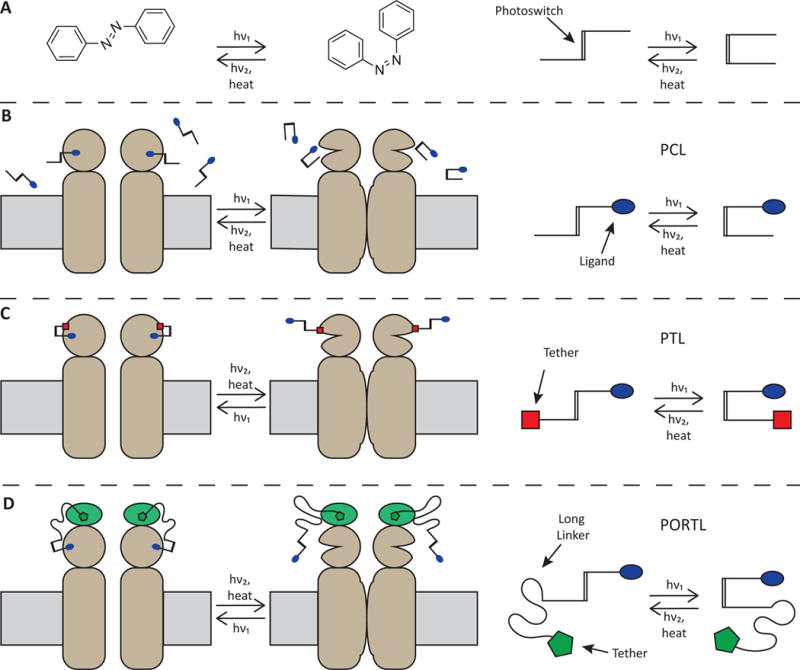Figure 1.

Strategies for incorporating synthetic photoswitches into neuroscience tools. A) The trans and cis isomers of azobenzene can be interconverted with different wavelengths of light. Cartoons show how the core azobenzene structure can be elaborated into photoswitchable tools. B) Photochromic ligands (PCLs) switch between active and inactive compounds that freely diffuse and function with endogenous channels and receptors. C) Photoswitchable Tethered Ligands (PTLs) covalently attach to an engineered protein to provide photocontrol. D) Photoswitchable orthogonal remotely tethered ligands (PORTLs) are conceptually a cross between PCLs and PTLs, they use a self-labeling protein fused to the target protein and a photoswitch ligand that has long linker to accommodate attachment farther from the ligand binding site.
